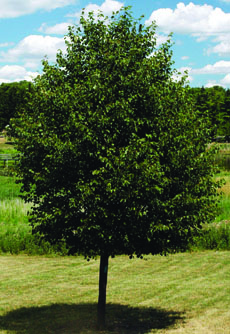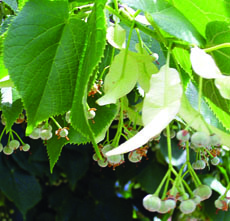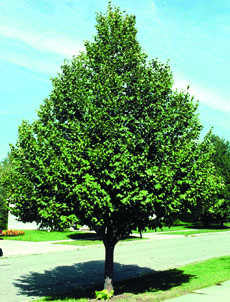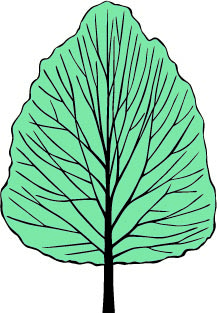
Little-leaf Linden
DOWNLOADMarch 11, 2016 - Bert Cregg
Tilia cordata
- Height: 50’ - 70’
- Spread: 35’ - 50’
- Site characteristics: Full sun; moist, well-drained soils; tolerant of alkaline soils; tolerates urban conditions.
- Zone: 4 - 7
- Native range: Europe
- pH: 5.0 - 8.5
- Shape: Dense, low-branched, pyramidal to ovate
- Foliage: Dark, shiny green in summer; yellow-green to yellow in fall
- Other: Fragrant, pale yellow flowers in spring
- Additional: Chancellor (‘Chancole’) – fast growing, narrow in youth and becoming tightly pyramidal with age; 20-30’ wide, symmetrical, upward branching with good branch angles and straight trunk; dense, gold-yellow fall color. Corinthian (‘Corzam’) – narrowly pyramidal, compact, 15-25’ wide, straight central leader, uniform limb spacing, straight trunk, foliage smaller, thicker, glossier, and reportedly more blue-green. ‘Glenleven’ – reportedly very cold hardy, fast growing, pyramidal to narrow-oval, straight trunk, symmetrical branching, larger leaves, less dense than some other cultivars. Greenspire – Zone 4, pyramidal to broad-oval, strong central leader, symmetrical branching habit. Shamrock (‘Baileyi’) – Zone 4, broadly pyramidal, more vigorous and more open habit than Greenspire, symmetrical branching at an early age.
- Pests: Japanese beetles are the principle pest



Photos: Bert Cregg, MSU (left), and Jesse Saylor, MSU (middle and right).
See full list of smart tree selections for communities and landowners



 Print
Print Email
Email






